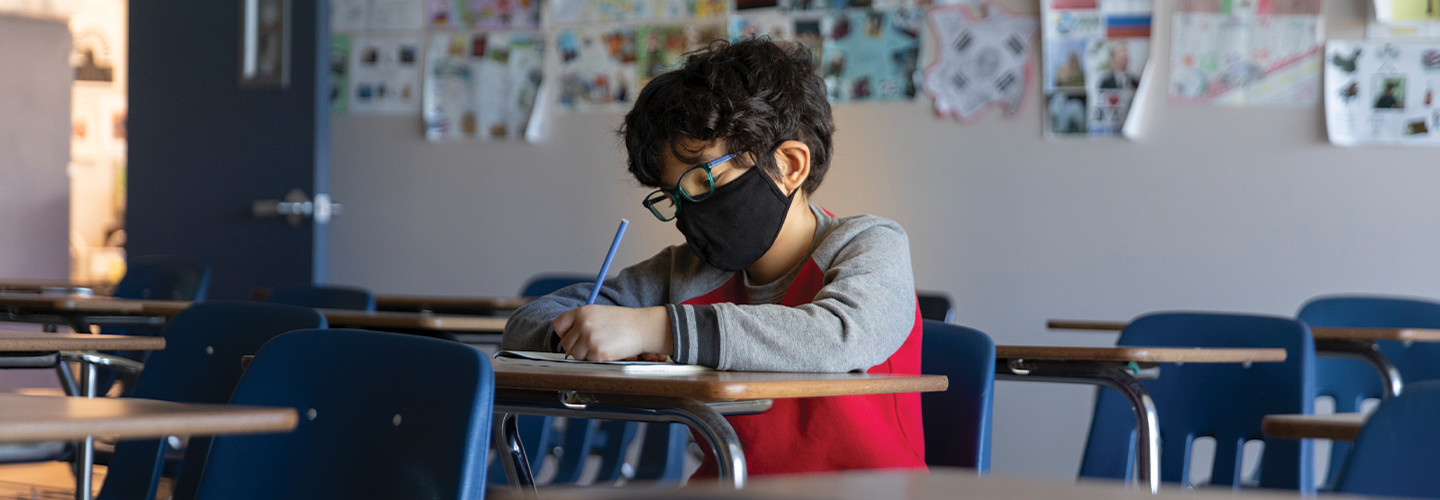Improving Air Quality and Maintaining Social Distancing
Improving air filtration and ventilation in schools can help mitigate the potential airborne transmission of COVID-19, says Joseph Allen, director of the Healthy Buildings Program at Harvard’s T.H. Chan School of Public Health, in an interview with The Wall Street Journal.
Strategies such as increasing outdoor air ventilation, filtering indoor air and using portable air cleaners with HEPA filters are all key elements of that work, according to the program’s report on risk reduction strategies for reopening schools.
School and district leaders should also consider verifying ventilation and filtration performance and adopting advanced techniques for maintaining air quality, according to the report.
For example, smart HVAC systems, which are energy-efficient and cost-effective, have sensors that can remotely monitor and control humidity, temperature and indoor air quality, and check the level of carbon dioxide and other pollutants. Data collected from these sensors can also be used to determine which areas in a building need the most cleaning, according to Deloitte.
DISCOVER: Find out how machine learning tools can help schools identify facility inefficiencies.
Using ultraviolet light is also effective for controlling and reducing airborne allergens or contaminants in buildings, Khurana says.
“Coils are basically your conduit or your infrastructure in the building that takes your cold and hot airflow through the building. Various types of particle matter and pathogens can collect on those coils over time, so as the air circulates, it gets exposed to that over and over again,” Khurana explains. “When you put UV light inside the coils, that radiation has the ability to basically kill those pathogens and other harmful particles because of its properties.”
Khurana adds that UV light can also be used with air handling unit filtration. “Given an adequate amount of exposure, the UV light can affect the air that’s flowing out there and kill pathogens,” he says. “That also helps reduce the number of harmful particles that are circulating through the building.”
Additionally, video analytics can help schools maintain social distancing inside buildings, Khurana says. A video analytics solution can tell whether or not people are wearing masks and maintaining a safe distance from each other. “It’s able to deduce that distance, even through a camera image, and it can create an alarm when people are standing too close to each other,” he says.
MORE ON EDTECH: How can schools protect student data when using emerging tech?
But before school and district leaders deploy these emerging tools, they should ensure that technology is supported in their policy and preparation planning, he says. They should also work with a technology partner to complete an assessment, giving them a better understanding of their building needs and the options available to them. “Then, make a decision on the best outcome for their environment.”
And while these solutions may be key to reopening schools now, in the era of COVID-19, they also bring long-term benefits.
“Many of these solutions are generally focused on health, wellness and security. Those have been needs in our school systems for a long time — COVID-19 has only accelerated them,” Khurana says. “Air quality can have a positive impact on overall student health, and enhanced video surveillance is important for keeping schools more comfortable, safe and secure.”










